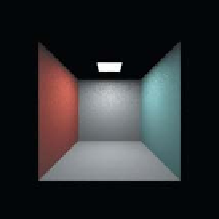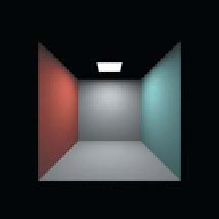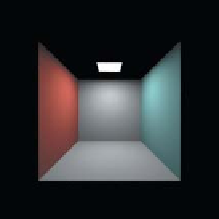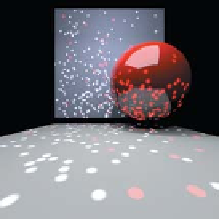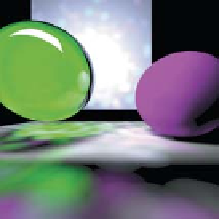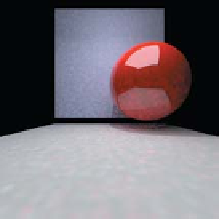Graphics Reference
In-Depth Information
Figure 32.13: One-sample-per-pixel rendering of the emitted direct light from area lights
only, using 1, 10, and 100 samples to estimate the light from the area source.
Figure 32.14: The three other test scenes, rendered with 100 primary rays per pixel, ten
thousand (top row) and one million (bottom row) shot photons, and one sample per source
for area lights.
reflected light dominates the direct light near the top, and so the noise there ends
up less perceptually significant when we include indirect light.
Looking at the other test scenes (see Figure 32.14), we see that photon map-
ping with one million photons handles the first scene very well. The third scene,
with the transparent sphere, exhibits a caustic highlight beneath the sphere. In the
fourth scene, the emitting luminaire is (as a reflector) completely Lambertian and
black. The mirror is pure specular, and the panel beneath the mirror is dark and
Lambertian. Even with one million photons shot, only a few photons end up in the
scene, and they're used only in estimating the brightness of the panel beneath the
mirror, which is overwhelmingly determined by direct lighting, so the computa-
tion of the photon map was almost pointless.
In all versions of photon mapping, we're converting from
samples
of the arriv-
ing power near
P
to an
estimate
of that power
at P
. This is extremely closely
related to the problem of
density estimation
in statistics. The most basic form
of density estimate is
nearest neighbor,
in which the value at
P
is taken to be
